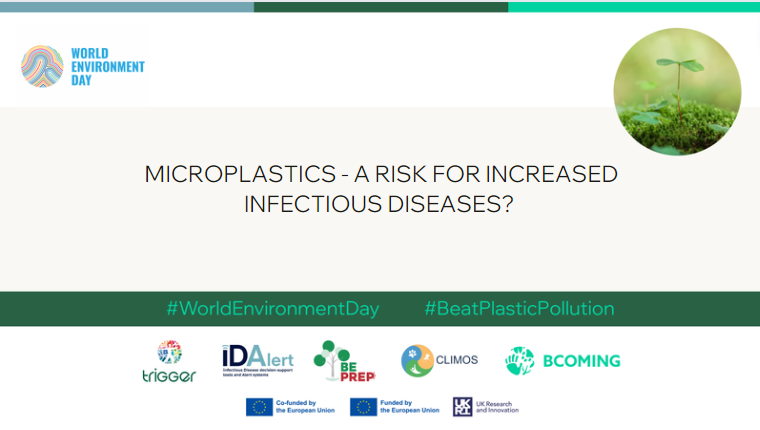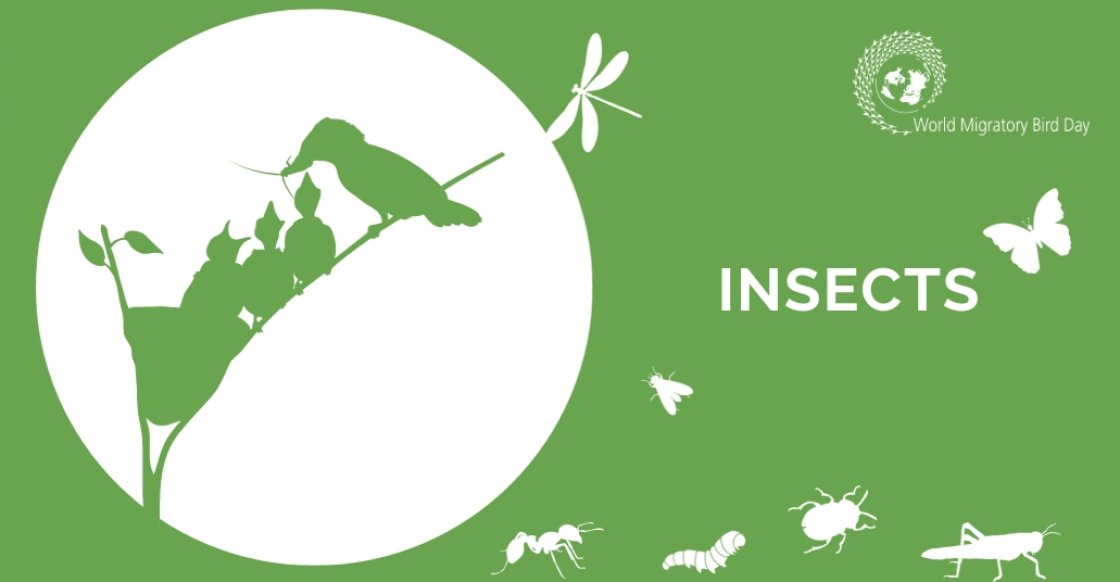MICROPLASTICS - A RISK FOR INCREASED INFECTIOUS DISEASES?
World Environment Day, celebrated annually on 5 June, is a global initiative that brings together individuals, businesses, governments, and organisations to raise awareness and act on pressing environmental issues.

The theme for World Environment Day 2023 will focus on solutions to plastic pollution, highlighting the urgent need to address this global crisis under the campaign #BeatPlasticPollution. This year also marks the event’s 50th anniversary. Plastic pollution has become a grave threat to the planet, with over 400 million tonnes of plastic being produced each year, half of which is designed for single-use purposes [1]. Shockingly, less than 10 percent of plastic is recycled, and an estimated 19-23 million tonnes of plastic waste end up in lakes, rivers, and seas, causing widespread environmental damage encompassing biodiversity loss, environmental degradation, habitat contamination, and the potential impact of microplastics on infectious diseases. This pollution not only affects our ecosystems but also poses risks to human health, as microplastics find their way into the food we eat, the water we drink, and even the air we breathe [1].
The EU funded projects BCOMING, TRIGGER, CLIMOS, IDAlert and BEPREP will run a social media campaign to raise awareness of the potential risks plastic pollution poses for infectious diseases – its spread and occurrences.
- Biodiversity Loss and Environmental Degradation:
Plastic pollution has far-reaching consequences for biodiversity and the overall health of ecosystems. Marine and terrestrial wildlife often mistake plastic debris for food or become entangled in it, leading to injuries, suffocation, and death. This loss of biodiversity disrupts delicate ecological balances and can have cascading effects on entire ecosystems.
- Habitat Contamination by Vectors:
Improper disposal of plastic waste can contaminate habitats and serve as breeding grounds for disease-carrying vectors, such as mosquitoes. Plastic debris, especially in stagnant water bodies, provides an ideal environment for mosquitoes to reproduce, thereby increasing the risk of vector-borne diseases.
- Microplastics and Infectious Diseases:
Microplastics, tiny particles of plastic less than 5mm in size, can act as carriers for pathogens and contaminants, potentially increasing the susceptibility of reservoirs/hosts to infection with pathogens.
However, it is important to note the existing knowledge gap regarding the linkage between microplastics and infectious diseases. Further research is needed to explore this connection and develop a deeper understanding of the potential risks.
Working Together for Sustainable Solutions
Together, these five projects will share key messages to better understand the problem, while recognising the need for further research and collaboration. Plastic pollution severely threatens our ecosystems and its inhabitants' wellbeing. By recognising these environmental threats, such as biodiversity loss, habitat contamination, and the potential role of microplastics in spreading infectious diseases, we can work together to provide sustainable solutions. Raising awareness, implementing policies, fostering innovation, and promoting international cooperation are key steps toward mitigating the impact of plastic pollution and ensuring a healthier planet for future generations.
Join us on 5 June 2023 for World Environment Day as we #BeatPlasticPollution and make a lasting impact on the health of our planet and future generations.
Follow us on our social channels to learn more about the links between plastic pollution and the increased risk for infectious diseases.
[1]: https://www.worldenvironmentday.global/about/theme-host
ABOUT
The emergence, transmission and spread of zoonotic pathogens is an increasing problem fueled by climate change, travel and tourism, trade, but also by antimicrobial resistance, food safety, and societal and environmental transformations. This challenge requires a new paradigm in which animal, human, and environmental change interactions are addressed from an EcoHealth and OneHealth systems perspective. The EU-funded project IDAlert aims to integrate this new paradigm and tackle this challenge by developing novel indicators, innovative early warning systems and efficient tools for decision-makers, and by evaluating adaptation and mitigation strategies to build a Europe more resilient to emerging health threats.
The BCOMING project’s main objective is to co-construct innovations with all stakeholders in biodiversity hotspots (Cambodia, Guadeloupe, Guinea/Ivory Coast) to reduce the risk of infectious disease emergence through biodiversity conservation and zoonotic disease surveillance. Officially launched on the 1st of September 2022, BCOMING (Biodiversity Conservation to Mitigate the risk of emerging infectious diseases) is a project co-funded by Horizon Europe and it is backed up by 14 partners from Europe, Asia, and Africa. It aims to reduce the risk of zoonotic disease emergence, and promote integrated management of zoonotic exposure, biodiversity, and livelihoods through a One Health participatory systems approach.
CLIMOS aims to assist mitigation of climate- and climate change-induced emergence, transmission and spread of vector-borne and zoonotic pathogens based on Eco-health and One Health approaches. This will be achieved by quantifying climate and environmental-related drivers of the sand fly vector populations and sand fly-borne diseases (SFBDs) across Europe. The project will provide an Early Warning System (EWS) and decision support frameworks for more accurate climate and health modelling, the prognosis of infection risk and range expansions, and adaptation options. Socio-economic analysis and risk assessments will inform decision support providing social and cost-benefit evaluations. Towards these goals, an open-access interactive CLIMOS online platform will be developed containing data on vector and SFBD species geography and up-to-date monitoring, climate, environment, and mathematical algorithms. The accompanying educational platform will enable evidence-based mitigation decision-making by social, environmental and financial stakeholders, public bodies and policymakers. With a duration of 36 months, the project was launched on the first of September 2022 and is composed of 29 partners from 16 countries.
BEPREP elucidates the role of undisturbed and restored biodiversity in mitigating threats to health security from zoonotic and vector-borne diseases along the infect-shed-spill-spread cascade, to identify best practices of nature restoration, including rewilding, and public health interventions. Together with 15 partners we work in 11 case study areas from boreal to tropical biomes in 2022-2027. BEPREP will provide new impetus for strengthened disease surveillance, preparedness, and response at the European and global scales.
SoluTions foR mItiGatinG climate-induced hEalth thReats (TRIGGER) Project aims to deepen current understanding of the complex linkage between climate (namely meteorological and climatic conditions), human health and ecosystems (exposome framework) and to use this knowledge in practice to advance society up-take at both personal and policy level. TRIGGER will create a set of newly conceived Climate-Health Connection Labs (CHC Labs) in the European regions of Bologna (Italy), Augsburg (Germany), Oulu (Finland), Heraklion (Greece), and Geneva (Switzerland) to engage citizens, practitioners and policy-makers in a co-creation process targeting areas exposed to adverse impacts of climate change.



